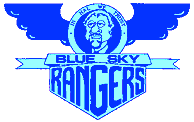World Series Major League® Baseball


INTELLIVISION CARTRIDGE [Mattel Electronics #4537]
Release 1983
Also released as Super Series Big League Baseball by Intellivision Inc.
Design/Program: Eddie Dombrower
Voice Implementation: Steve Ettinger
Voice Processing: Mattel Speech Lab
Music/Sound Effects: David Warhohl

DEVELOPMENT HISTORY
Major League Baseball launched the Intellivision; Marketing hoped a super-Baseball cartridge would do the same for the Entertainment Computer System. This was to be the most complex Intellivision game yet, using both the ECS and Intellivoice.
Programming started as a team effort of Ken Elinger and Eddie Dombrower, but it quickly became a solo effort of Eddie's.
The results were spectacular. Eddie designed the screen views as if the game were being covered by multiple television cameras there were even insert shots appearing in the corners.
And the gameplay, based on real ball player statistics, was beyond any other video game sports cartridge.
Unfortunately, by the time the game was released, Mattel Electronics management had changed and the ECS had dropped to a low marketing priority. The system - and the game - received little support. Few people ever saw the game.
Ten years later, a new generation of "virtual reality" baseball games hit the computer market. Reviewers raved about their multiple-TV-camera viewpoints and statistics-based game play, features World Series Major League Baseball pioneered in 1983.



